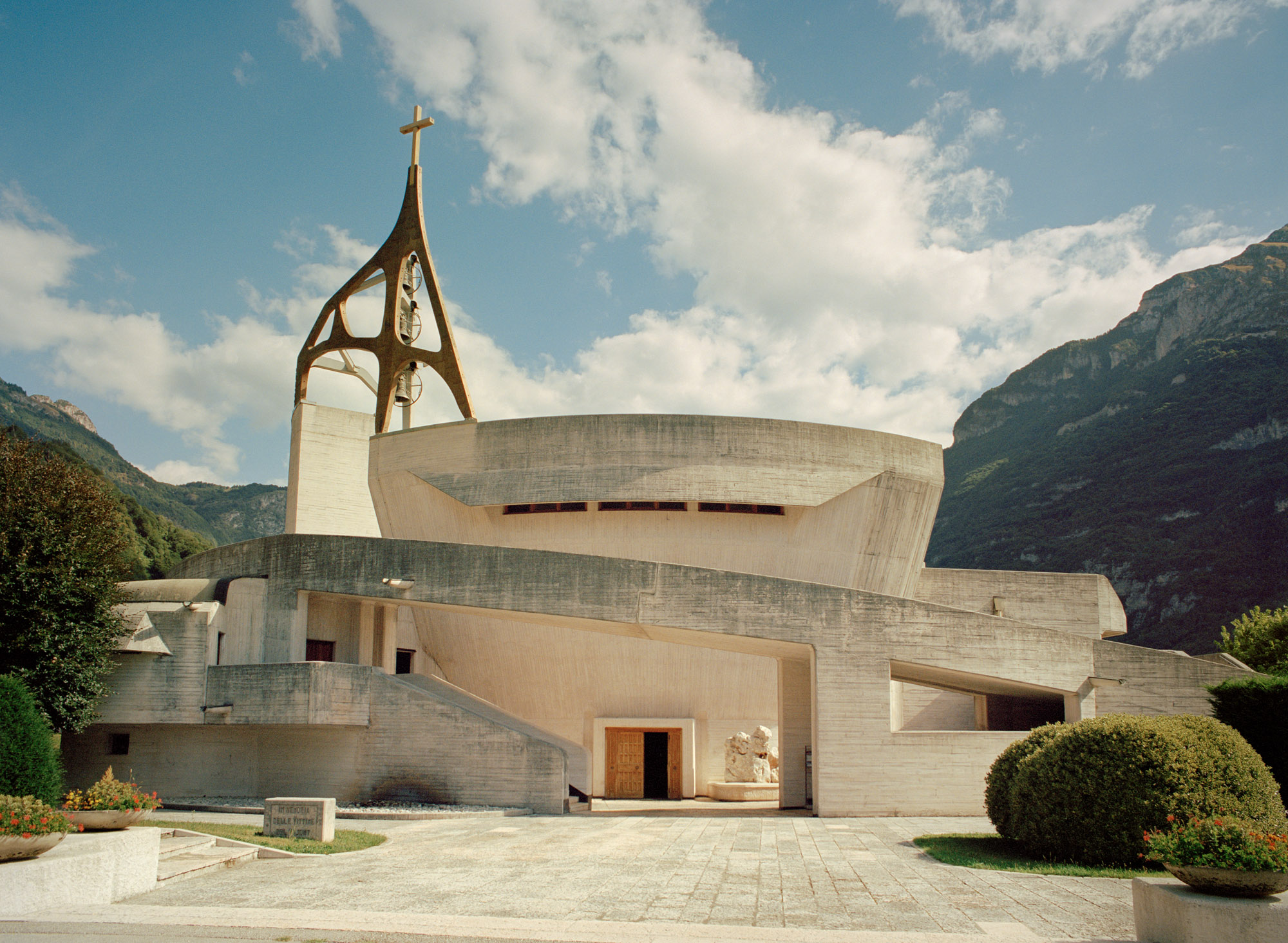
Arriving at Longarone on a slow train from Venice, zigzagging up the Piave Valley into the jagged heights of the Dolomites, the visitor is faced by a gruff modern road and, on the other side, the unresponsive façades of indifferent 1960s buildings. It seems so very disappointing. Why would anyone build like this in such an eagle’s nest setting?
A two-minute walk from the station explains the out-of-place character of this mountain town. Here, in a small bus station square is one of the most extraordinary of all 20th-century European churches. Antithetical in terms of texture, composition and presence to every other building in Longarone, it’s as if a meteorite has crashed and, trying to raise itself from fractured ground, has morphed into some otherworldly formation. Comprising a pair of intersecting and spiralling concrete amphitheatres – one internal, the other external – the Church of Santa Maria Immacolata, consecrated in 1983, is, in fact, a late-flowering masterwork by Italian architect Giovanni Michelucci, who died in 1990 at the age of 99.

The story of Giovanni Michelucci's Church of Santa Maria Immacolata
Commissioned in 1966, Santa Maria Immacolata is both a parish church and a memorial to the 1,450 citizens of Longarone killed on the night of 9 October 1963 by a megatsunami caused by a landslide crashing into the nearby Vajont Dam, triggering a 250m-high wave that engulfed the town. Ahead of it, a force of air on a par with the power of a nuclear bomb hit Longarone first. The town was almost completely flattened. Which is why, rebuilt at a pace in the 1960s, the buildings seem disappointing when first seen from the railway station.
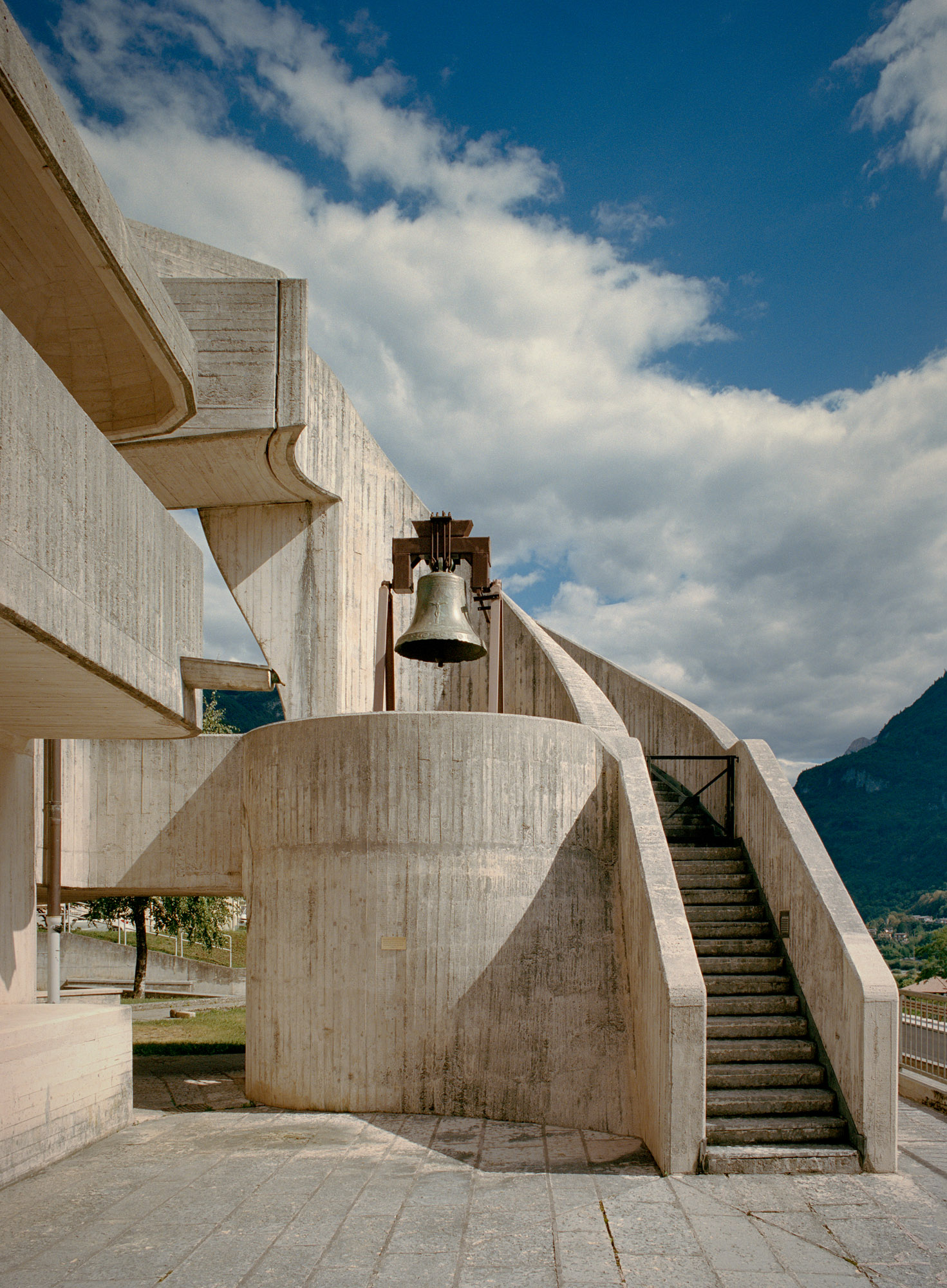
From the church’s external amphitheatre, gained by winding ramps, you can look towards the disused Vajont Dam. It is a disconcerting sight. Behind it, the geologically nervous Monte Toc, which is prone to landslides, is known as the ‘Walking Mountain’, while its very name in the local Friulian dialect means ‘soggy’ or ‘rotten’. The church, with its exploded architecture, sits in counterpoise to the rugged mountain landscape.
Although rugged, too, Santa Maria Immacolata is, nevertheless, well crafted as a visitor should expect of a building by an architect born into an Arts and Crafts tradition. Michelucci’s family were craft metalworkers. The curving concrete seats of the internal amphitheatre, surrounding a raised marble altar, are capped with mountain fir. A handless statue of the Virgin Mary, from the pre-tsunami church – found in the Piave River miles to the south – surprises you from a votive altar. Bells rise in a stylised sail. A poignant crypt reached from the ramps shrouds architectural and decorative fragments from the earlier church.
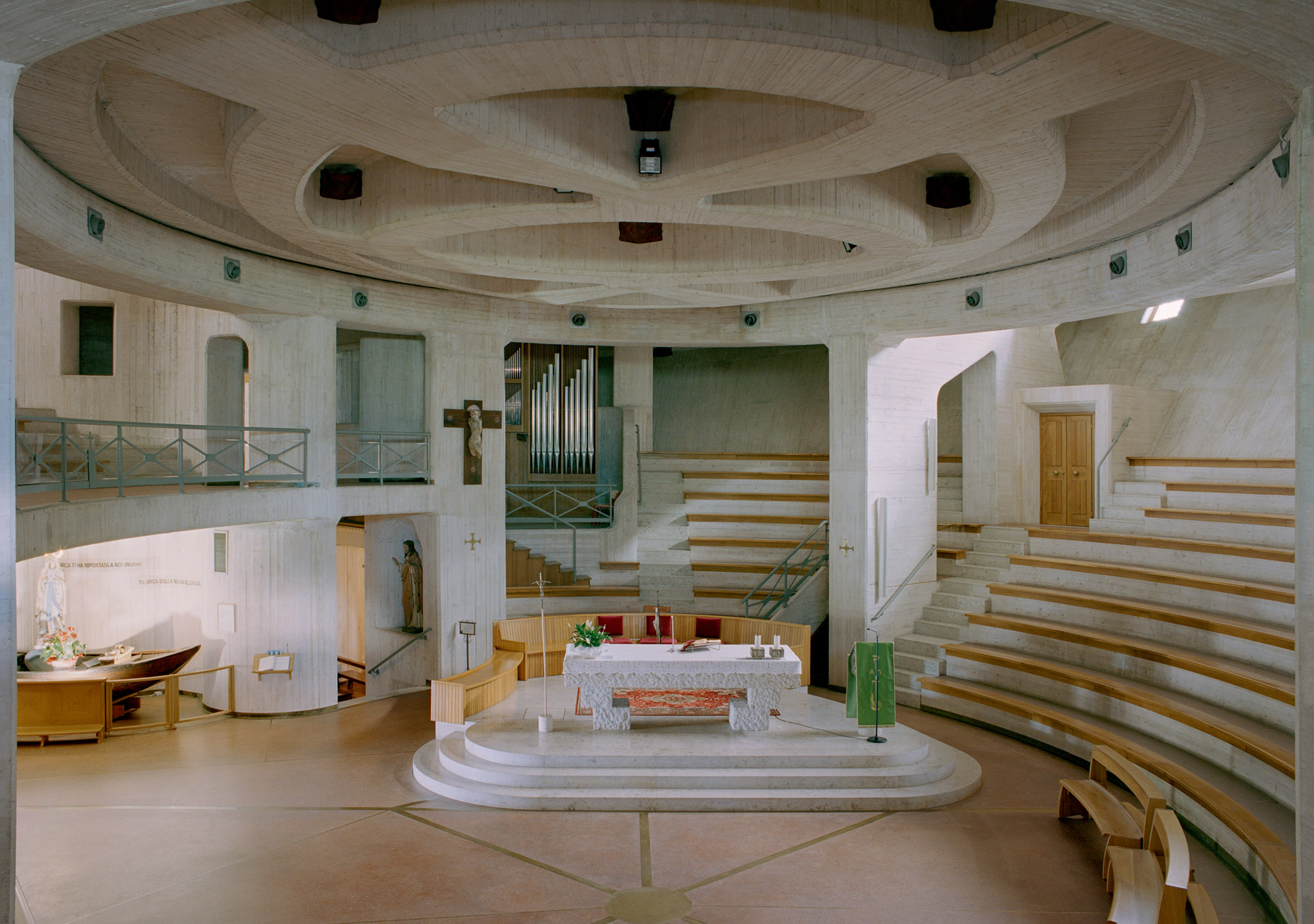
Santa Maria Immacolata is sombre and haunting, a journey of the soul up to the mountains and down again along an enigmatic architectural path. Certainly, Michelucci, a religious man, was a master of commemorative and solemn architecture realised in unexpected ways. Who could not be surprised by his earlier autostrada church, San Giovanni Battista (1960-64), set at the intersection of the A1 and A11 motorways on the fringes of Florence?
Its sinuous copper roof covers the asymmetric stone-clad concrete building like the folds of a Biblical tent, while the columns supporting the roof form a mesmerising architectural grove. Where else can you find a motorway service area like this? Rather than offering drinks and snacks, it asks those parking here to pray for the souls of the 164 workers who died building the Autostrada del Sole. Stopping for petrol, you can also find spiritual solace.
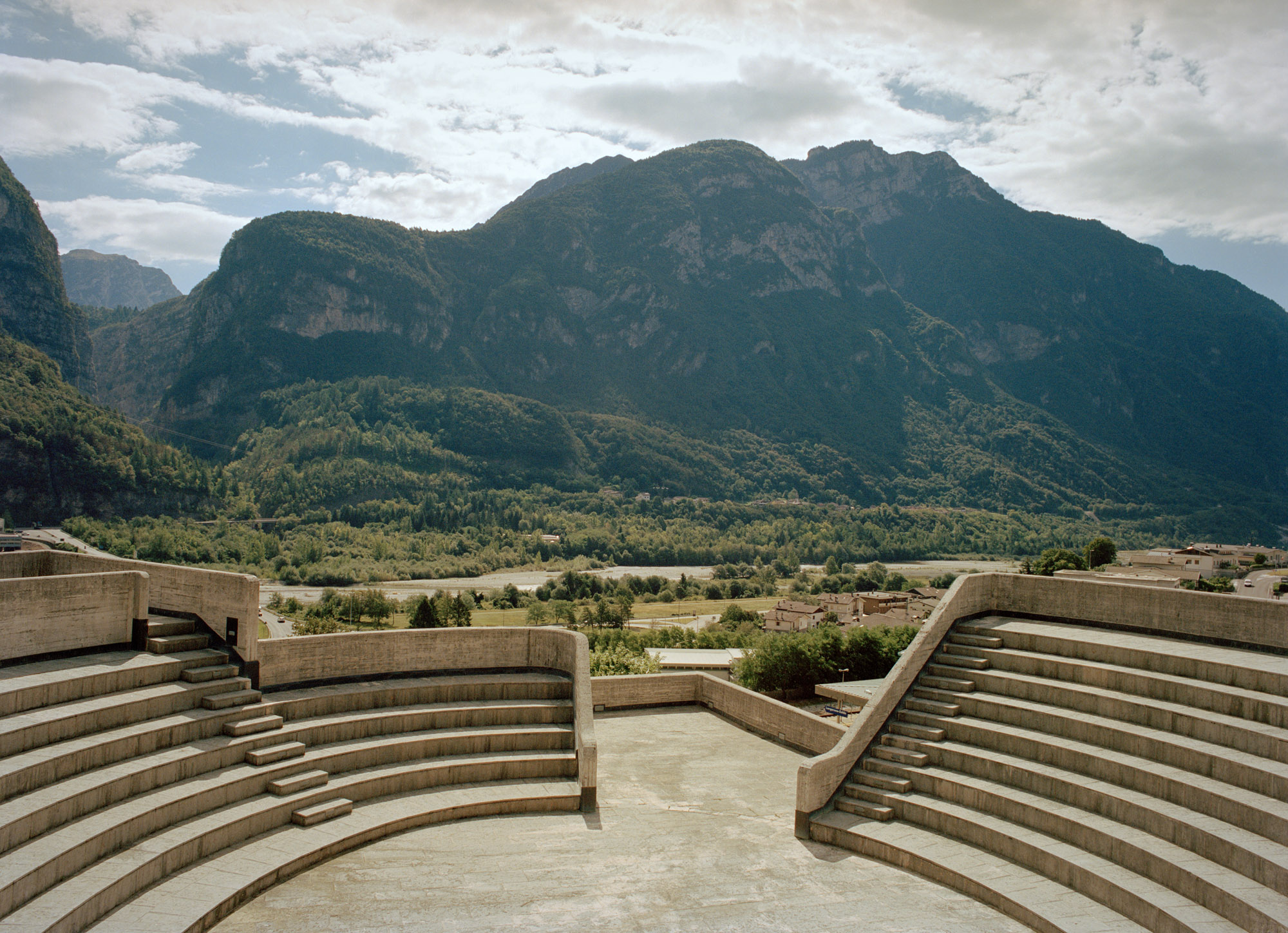
Born in the Tuscan city of Pistoia, Michelucci studied architecture at Florence’s Academy of Fine Art. His head filled with Futurist ideals, he served as a soldier in the First World War. Post-war, while building and publishing critical magazines, he made his name coordinating Gruppo Toscano, a group of young architects, which won the competition to design Florence’s new Santa Maria Novella railway terminus. As beautiful today as it was when completed in 1934, the station is a fusion of ideas inspired as much by the Viennese Secessionists Adolf Loos and Josef Hoffmann, and by Frank Lloyd Wright, as by Italian discourse.
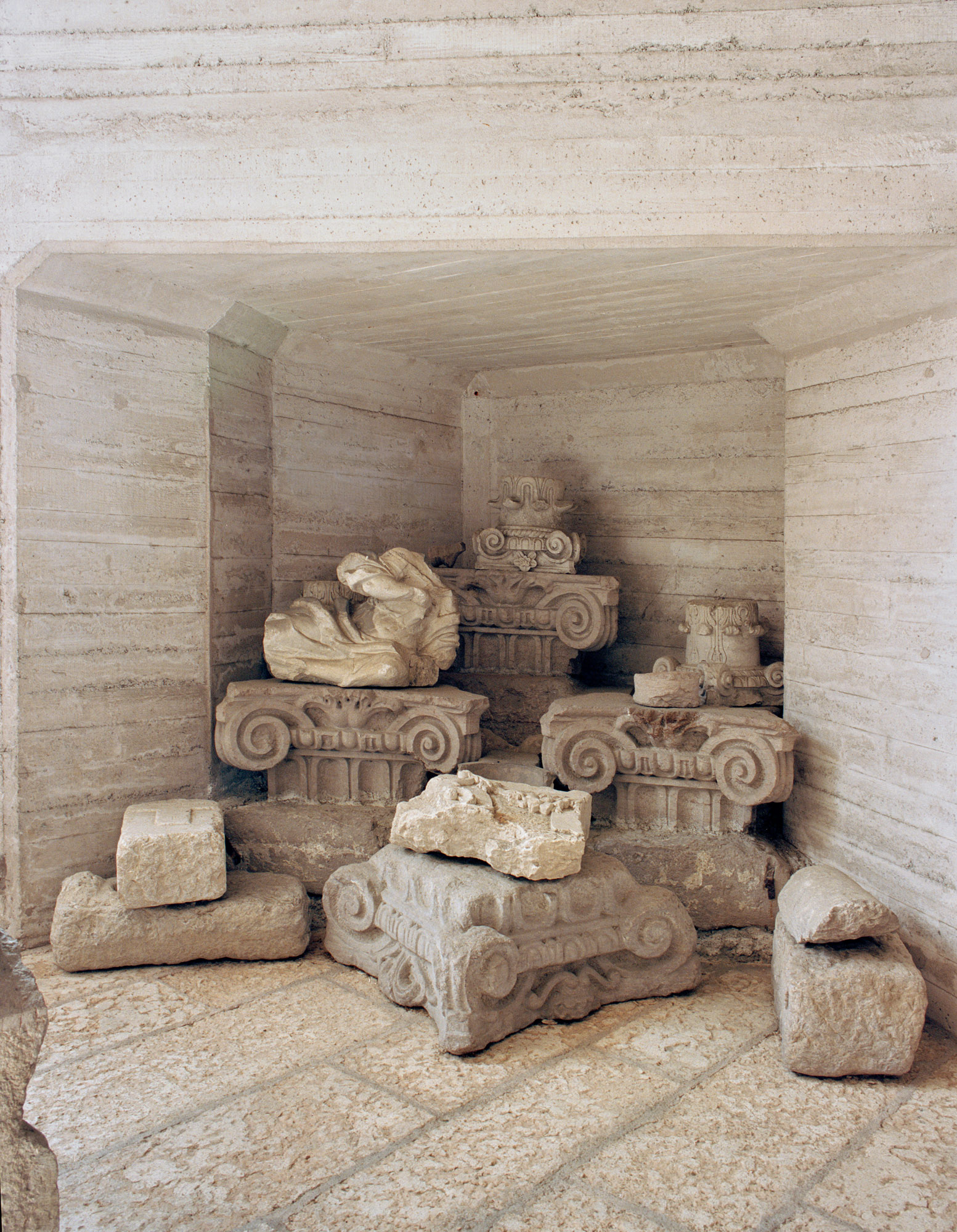
Under the patronage of a much-impressed Marcello Piacentini – Mussolini’s favourite Italian architect – Michelucci worked in Rome on the new university and on EUR, the imposing southern entrance to the city that opened in the guise of an Expo in 1942. The Second World War intervened, and it was wartime damage to Florence that pushed Michelucci in a wholly new direction. When his ideas for the rebuilding of Florence were rejected – he stood against the ‘museumification’ of the city – he took up the post of professor of the Faculty of Engineering at the University of Bologna and began to experiment ever more radically with design. What should the contemporary architect’s relationship to history be? What, he wanted to know, was the limit before architecture became arbitrary?
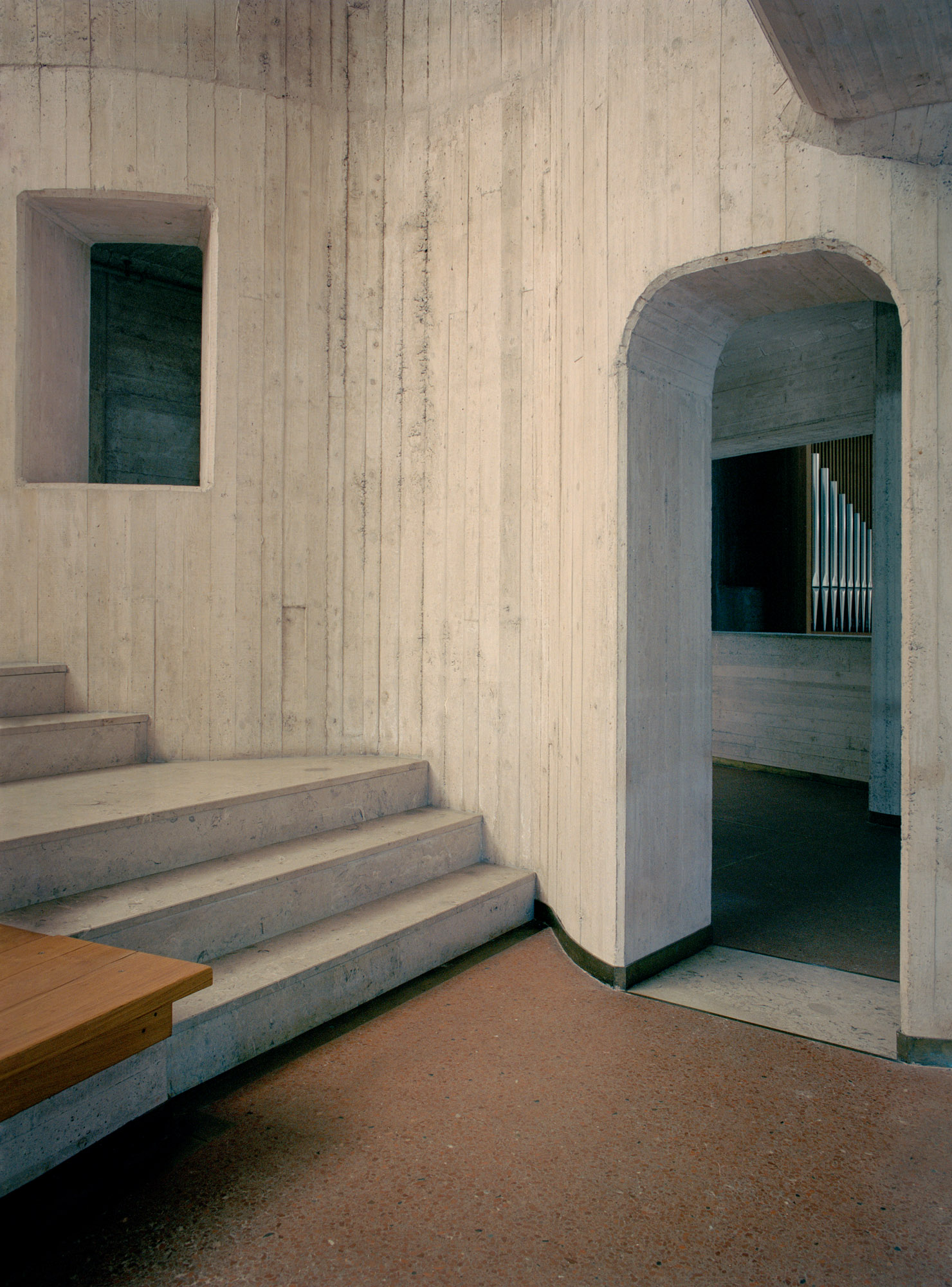
Michelucci experimented with the design of elemental vernacular churches that – giveaway concrete elements aside – might be from almost any century, and created buildings with ambitious open spaces set under equally adventurous roofs (including one for a Pinocchio theme park near Pistoia).
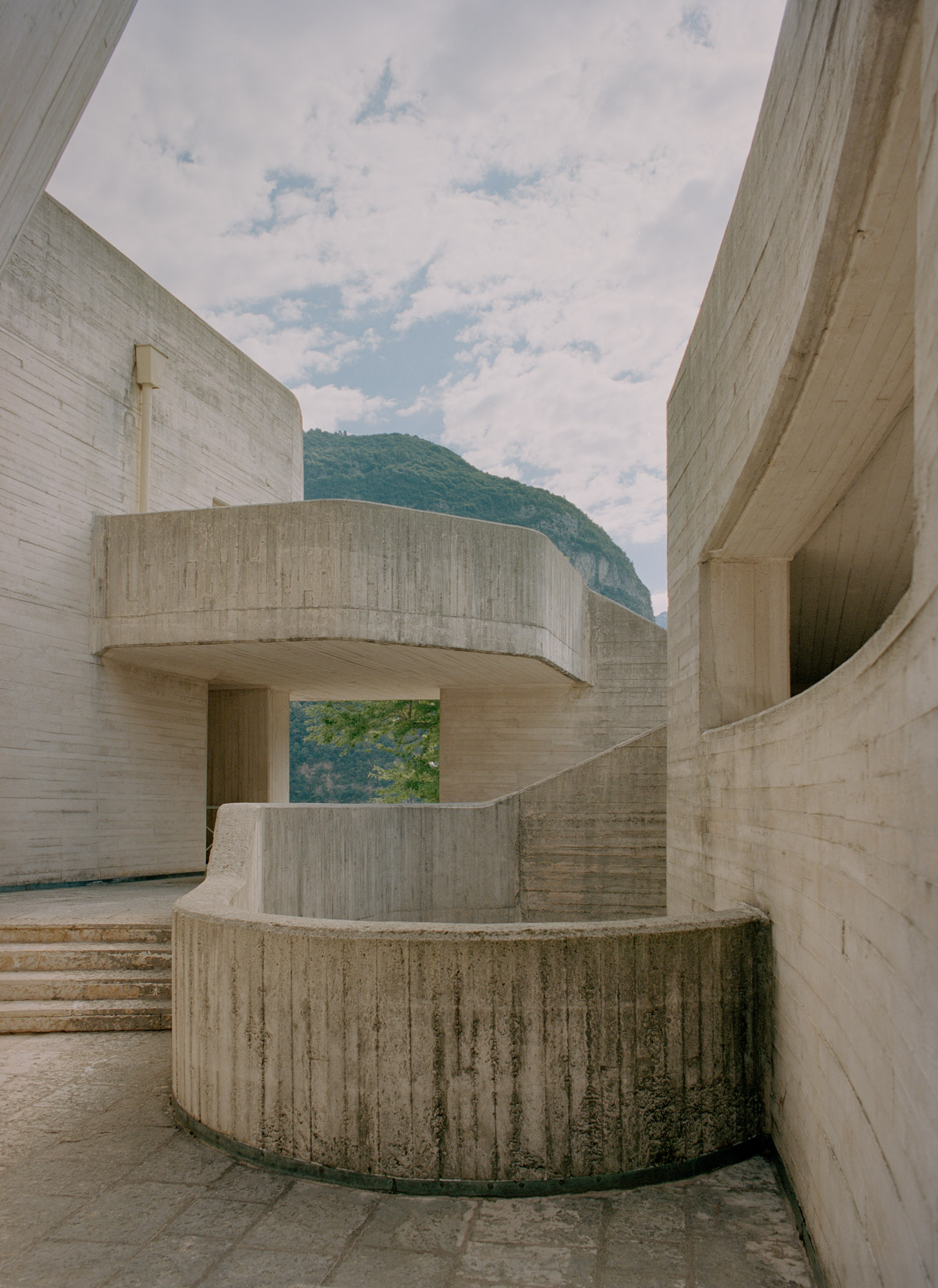
Santa Maria Immacolata took Michelucci’s quest for new types of structure and space into the realm of, if not the arbitrary, then perhaps the near transcendent. It is certainly worth making a design pilgrimage to Longarone. In an otherwise visually prosaic town centre, Michelucci has shaped an architectural odyssey, a true laboratory of space aligning the man-made with the uncertainties of nature, balancing the concerns of life, death and whatever might lie, this side of landslides, beyond those forbidding mountain peaks.
A version of this article appears in the April 2024 issue of Wallpaper*, available in print, on the Wallpaper* app on Apple iOS, and to subscribers of Apple News +. Subscribe to Wallpaper* today







